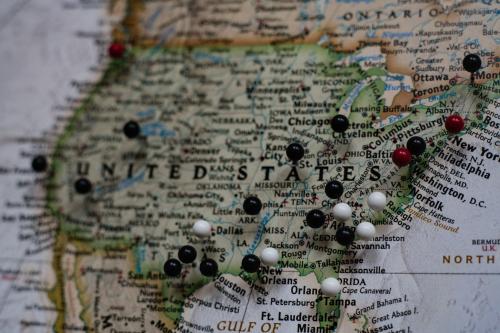Amid the economic tumult of the past two years—with nearly 30% of small businesses closing their doors at the height of the pandemic, workers quitting their jobs at historic rates, and ongoing disruptions to the global supply chain—one positive trend shined through: A record number of Americans started online microbusinesses.
According to Venture Forward, a multiyear research program from GoDaddy to quantify this entrepreneurial activity, Americans created 2.8 million more online microbusinesses in 2020 than in 2019. Online microbusinesses are defined as businesses with a discrete domain name and an active website. About 90% of these online businesses employ fewer than 10 employees, and nearly 17% of the 20 million microbusinesses tracked in the U.S. were started after the onset of the pandemic, per Venture Forward’s latest national survey.
This increase aligns with larger entrepreneurial trends. The number of unincorporated, self-employed Americans reached 9.44 million in October—one of the highest numbers since the 2008 financial crisis, only trailing July and August of this year. This came one month after 3% of the U.S. workforce (4.4 million Americans) quit their jobs—an all-time high.
There are several factors that may explain the online microbusiness boom. Soaring unemployment rates in the early months of the pandemic forced millions to look for new income streams. Pandemic relief checks likely helped some people start new businesses. And compared to previous recessions, potential entrepreneurs now have more widely available broadband, greater digital fluency, and a more mature e-commerce marketplace that simplifies website creation, marketing, and online sales. Today, it’s much easier to translate an artisanal hobby or creative passion project into an online venture than it was in 2008.
Recent research from Venture Forward suggests that these lowered barriers—which make it easier for microbusinesses to generate new jobs and income—help the economy weather economic shocks such as the pandemic. Many recently launched microbusinesses are either too new or too small to show up in traditional economic data such as jobs reports or new business registrations. But a unique dataset of 20 million microbusinesses with domain names registered with GoDaddy has unveiled their economic impact, which was largely invisible to policymakers.
Working with the Venture Forward data and financial support from GoDaddy, economists at UCLA have shown that a 1-percentage-point increase in the Microbusiness Index (a composite of factors that measure online microbusiness success) can cause a 0.12-percentage-point reduction in unemployment. And while 39% of microbusiness founders Venture Forward surveyed said their enterprise is currently a supplemental source of income, 67% of them would like their microbusiness to become a full-time job. Currently, about a quarter of the surveyed microbusiness owners earn more than $4,000 per month from their venture.
After the onset of the pandemic, online microbusiness ownership grew fastest among groups hit hardest by the economic fallout. Black owners account for 26% of all new microbusinesses, up from 15% before the pandemic. Similarly, women-owned businesses surged to 57% of new microbusiness starts, up from 48%. Microbusinesses also became a more popular option for those without a college degree, rising from 36% to 44%.
It is not abnormal for “necessity entrepreneurs”—individuals pushed into entrepreneurship after job loss or income decline—to pivot to self-employment during recessions. But this microbusiness surge is too large to be fully explained by necessity entrepreneurship and warrants greater attention from policymakers to understand how these nascent owners can be supported. Like companies of all sizes, access to capital is a top concern when getting started, but 63% of microbusiness owners who started after 2020 needed less than $5,000 to get going—an amount that traditional banks are not optimized to provide. Universal broadband access remains critical for an increasingly web-native wave of entrepreneurs. And as Brookings Metro nonresident senior fellow Pamela D. Lewis argues, local economic development strategies may look different for microbusinesses than for larger businesses, requiring distinct interventions related to networking, practical assistance, and mentoring.
Ultimately, a shift in mindset is as important as policy change. Many local economic growth policies focus on target industries or chase well-documented metrics such as job creation. But microbusiness owners do not fall neatly into traditional economic development strategies. They do not think of themselves as part of a larger industry, and generally are not looking for a job. They are following a passion—not an industry—and need access to skills training, capital, and affordable broadband rather than a job fair.
Policymakers at all levels of government have tried to help the country’s small businesses survive the pandemic, but this online microbusiness boom has occurred with almost no consideration of their specific needs. Now, with newly available data in hand, it’s time to change that, and find out just how much of a boon this growing part of the economy can be.








Commentary
Microbusinesses flourished during the pandemic. Now we must tap into their full potential.
January 4, 2022